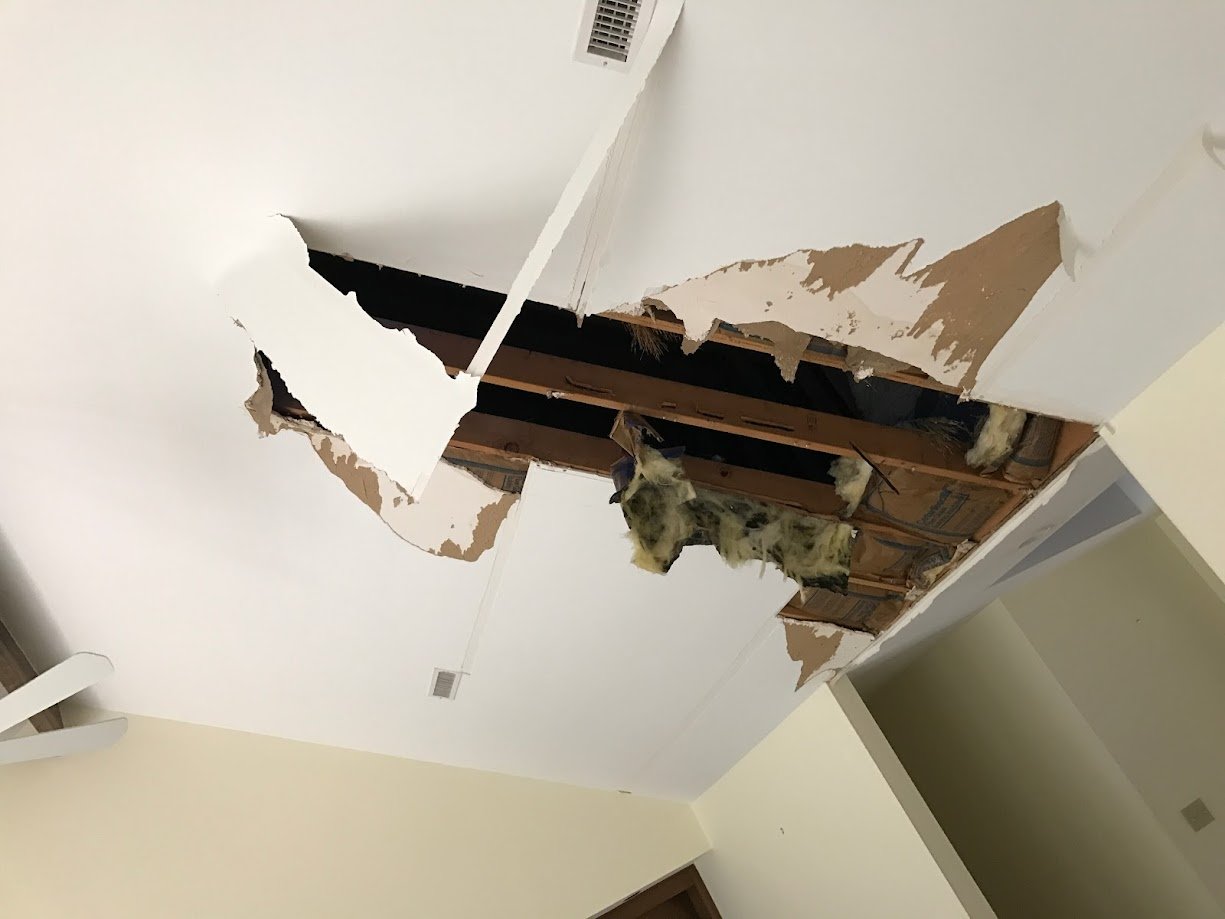
Picture this. A heavy rainstorm hits, and you're running around your house placing pots and pans trying to catch water dripping from the ceiling. It's a scene straight out of a movie, right?
Well, in real life, roof leaks are often less obvious and more sneaky. They're like that unexpected guest who shows up without warning. Yes, just like Aunt Linda at Thanksgiving.
Chances are, you're here because you've got a hunch something's not quite right up there on your roof. Maybe you've spotted a suspicious stain on the ceiling or noticed a strange drip. Whatever it is, you're in the right place to get some answers.
Here at RoofCrafters, with three decades under our belt, we've encountered every type of roof leak imaginable. From the dramatic to the subtle, each leak has its own way of making its presence known. We also know they can be frustrating, that's why we want to help educate you on leaks.
In this article, we'll guide you through what a roof leak might look like and the common signs that you might have a leak. Let's dive into the world of roof leaks and learn how to spot them before they turn into a bigger problem.
Identifying Roof Leaks: Common Signs and Symptoms
There is no unified sign that you have a leaky roof. Depending on a roof’s age, maintenance, and material, it can show many signs of leaking. Regardless of what it looks like, a leaking roof can damage the interior of your home, short out electrical wiring, and cause mold and wood rot.
Let's discuss the common indicators of roof leaks:
The Threat of Mold: How It Signals a Leaking Roof
One of your house’s biggest enemies is mold. Mold build-up occurs during the rainy season and grows on your roof’s surface or on the junction where the exterior wall meets the roof. Over time, this can lead to wood rot and damage the interior of your home.
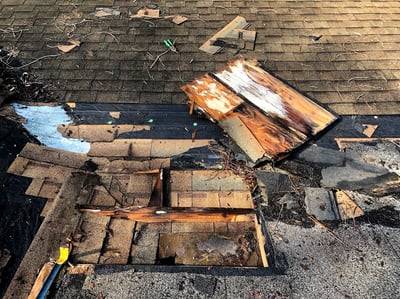
In some cases, mold starts growing in window frames and goes unnoticed while it continues to destroy your home. Be proactive and make sure to inspect your home frequently.
Gutter Issues: A Hidden Culprit Behind Roof Leaks
It's not only the roof itself we need to keep an eye on. Gutters play an important role in maintaining its integrity. When gutters are compromised, they can cause roof leaks by not channeling water away from your roof.
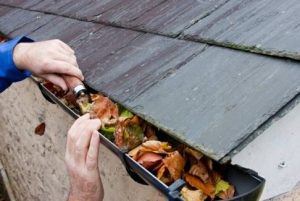
Any damage to the gutters hampers their ability to drain water away from your roof. To prevent water from pooling on the roof, inspect the gutters and ensure they aren’t rusting. If the gutters get clogged, water will stagnate on your roof and soak into your home. Regular inspection and maintenance of your gutters are key to preventing this sneaky source of roof leaks.
Ceiling Stains: Telltale Signs of Roof Leaks
When you spot unusual discolorations or bumpy textures on your ceiling, it's time to pay attention. These are often clear indicators of a roof leak. Ceiling stains can vary in appearance, but they generally signal that water has been seeping through your roof.
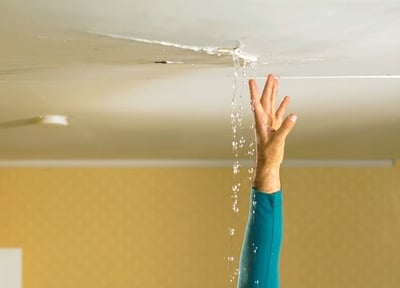
These leaks can cause serious damage. Ignoring these signs can lead to more extensive repairs down the line, so it's important to act promptly. If you notice such stains, it's advisable to call a professional roofer to assess and address the issue.
Spotting Trouble: Wet or Rusty Pipes as Indicators of Roof Leaks
Look for any wet or rusty pipes inside your home. Damp pipes indicate a gap in their installation that allows rainwater to enter through the roof. The seals may be broken.
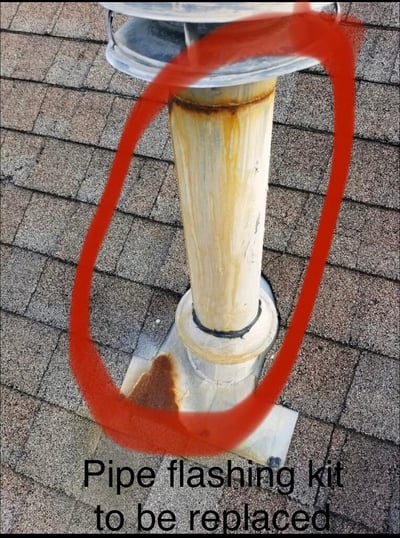
Oftentimes by checking in the attic, you can see the signs. Pipes that have rusted will not hold a seal. Which will allow water to seep in. If you notice wet pipes in the attic of your home, call a roofer immediately.
Warning Signs on Your Roof: Missing or Curled Shingles
Ideally, you should call a contractor to inspect your roof twice a year to ensure that everything is in good shape. However, we advise visually inspecting your property every month and calling a roofer to inspect it after harsh weather conditions.
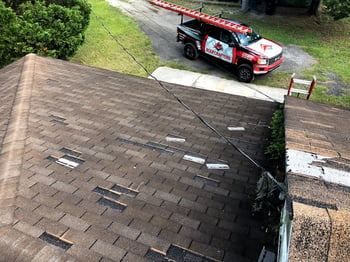
If you notice any shingles missing or lifted during a visual inspection, call a roofer to avoid any further roof leaks. Without shingles, your roof will lose its waterproofing. It's important to make sure that missing or damaged roofing materials get repaired promptly.
The Unmistakable Sign: Recognizing Water Drips from a Leaky Roof
An obvious sign that your roof is leaking is if it drips. During rainstorms, your roof might start leaking, sometimes even requiring you to bring a bucket to collect water. However, leaks are not always consistent; some might occur during specific weather conditions.

Regardless of the type of drip, call a roofer to come and inspect the roof and ensure that you take preventative measures such as covering the leak up with a tarp until the work can be scheduled.
Identifying Leaks: The Role of Damaged Roof Vents
Vents are great for keeping air circulating through your house, but you know what’s not great? Broken vents. It might seem tempting to repair broken vents; however, this is a short-term solution and can cause your roof to leak.
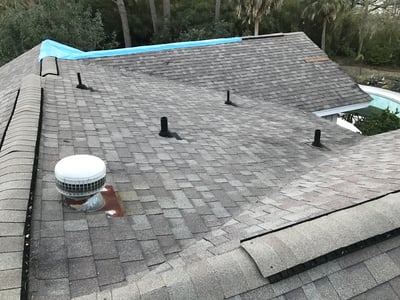
Moisture and rainwater seep in through broken vents and damage your home, so you should have a contractor replace them at the earliest to prevent further damage.
The Hidden Culprit: How Improper Roof Installation Leads to Leaks
Always ensure that you hire an experienced roofer for the job. An inexperienced roofing contractor might get the job done at a lower price; however, they might damage the roof or install it incorrectly, leading to expensive and time-consuming repairs.
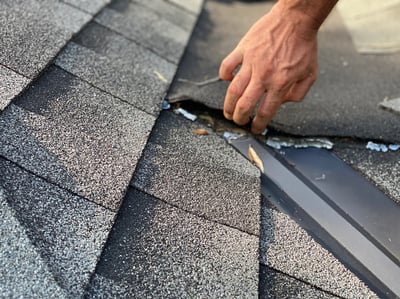
Signs of improper roof installation include:
- Poor alignment
- Gaps in the roof
- Stains
- Lack of symmetry
- Missing roofing
- Holes in roof
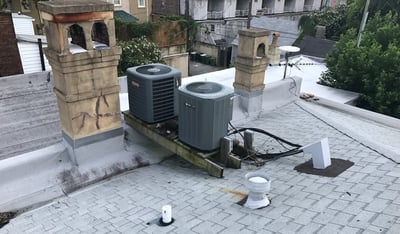
It is common to drill holes in shingles to mount outdoor HVAC units, solar panels, or satellite dishes. These holes allow moisture to seep into the roof and collect below the shingles, causing mold, mildew, and leaks.
Chimney Flashing Issues: A Common Source of Roof Leaks
Ensure that your roofer inspects the chimney when they inspect your roof. Diagnosing and preventing chimney-related issues will save you from leaks. The siding, flashing, and roof materials can cause a roof to leak.
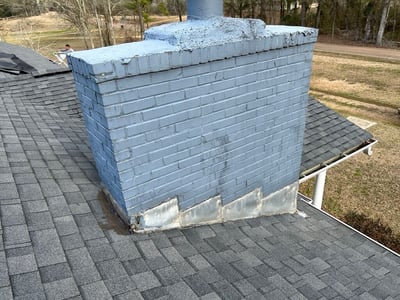
A proper chimney inspection includes checking the chimney cap, looking for cracks on its siding, and inspecting the flashing. A little preventive maintenance is key to avoiding serious damage.
Neglecting Care: How Lack of Maintenance Can Cause Roof Leaks
If you asked us, “What does a roof leak look like?” In its most obvious state, we’d say it looks like some form of water getting into your home. You should have a maintenance schedule for your roof and follow it because a failing or poor maintenance roof can be dangerous for your home and all your belongings.
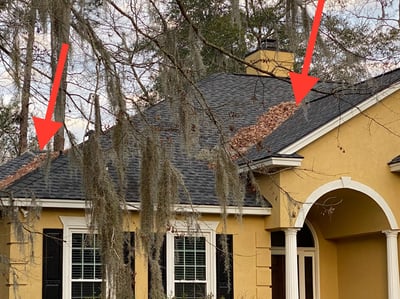
Have a professional roofer inspect your roof to ensure that everything is secure and will be ready and healthy to weather the next storm. Remember, you can’t claim damages for anything damaged by a faulty roof installation or a leaking roof if your insurance provider finds the cause to be negligence.
The Aging Factor: How Your Roof’s Age Contributes to Leaks
Every roof has a lifespan. Most asphalt shingle roofs last for 15 to 20 years. However, premium roofing materials can last from 50 to 100 years with the proper maintenance. Know what type of roof you have and how long it's been up there.
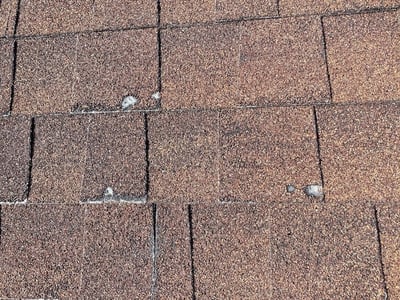
Going past the expected lifespan is asking for roof leaks. Plan to replace your roof when it's reaching its expected lifespan to prevent possible leaks. This will save money in the long run.
Assessing Your Situation: Is Your Home Showing Signs of a Roof Leak?
Recognizing any of the symptoms we've described in your home? If so, you're likely dealing with a roof leak. It's understandable if you're still unsure – roof leaks can be subtle yet complex issues. The key is to address the problem before it escalates. To get a clearer picture of what you might be facing, including potential costs, check out the article we wrote: "How Much Does It Cost to Repair a Leaky Roof?"
Don't let the problem grow; it's wise to consult with a professional roofing contractor. Having an expert inspect your roof can provide peace of mind and ensure that any issues are promptly and effectively addressed.
Now that you have a good idea of what a roof leak looks like and the warning signs, you should be confident about your next steps. If you'd like to have a professional inspection our family at RoofCrafters would be happy to come out and help you. Click the button below to get started.

My name is David Toth and I am the lead estimator in North Florida with RoofCrafters Roofing. Originally from New Brunswick, I have called Florida home for the past 47 years. I enjoy cooking along with traveling to different historical areas in Florida when I have free time.




